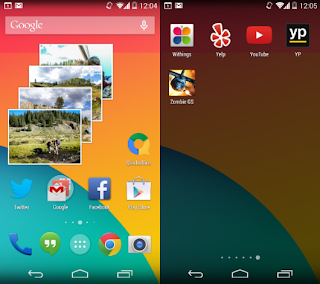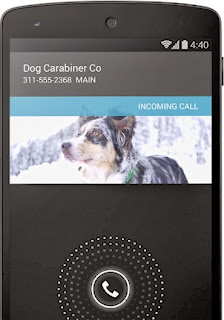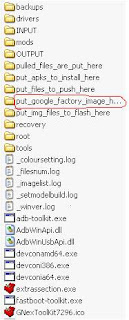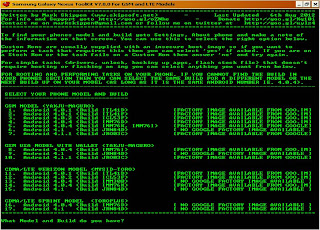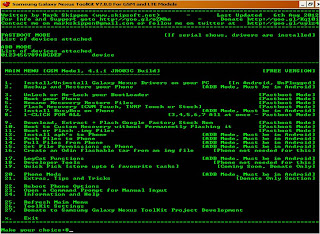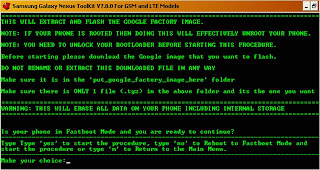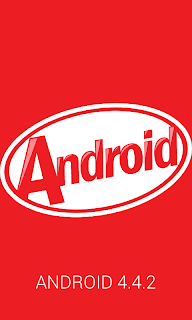 |
| Kitkat 4.4.2 Update for Galaxy W |
Google has said this was done to enable KitKat to run on new devices with 512MB RAM, rather than the 1GB to 3GB that we’re seeing in many of today’s phones and tablets. This is of immense importance because emerging markets are likely going to hold the key to the future success (or failure) of any platform on the market today. This key requirement means we’ll see Android running on more devices as time goes by. What’s more, the experience should be closer to that which you and I have experienced in higher-end devices. This is huge.
Don’t think that all this optimization is lost on you because you’re running a mid- to high-end phone or tablet. By reducing the footprint you’re going to get better overall performance, faster multitasking and app switching, and your battery-life will likely get better, too.
 |
| Kitkat 4.4.2 Update for Galaxy W Home Screen |
 |
| Kitkat 4.4.2 Update for Galaxy W Menu |
 |
| Kitkat 4.4.2 Update for Galaxy W Lock Screen |
 |
| Kitkat 4.4.2 Update for Galaxy W Setting |
First off, notice I put “improved” in quotation marks. They’re there for a reason. The dialer in Android KitKat is one of the places that you’ll see the most visual changes, and many of you have said that you hate it.
When you open your dialer you expect to be able to dial, yet you’re not shown the dialer — not until you press on the dial pad button. Instead you’re presented with a search bar (complete with a voice input button), the last incoming or outgoing call, followed by your starred and favorite/frequently called contacts. At the bottom of the screen are buttons for your call history, your dial pad, and “more”. This is a substantive change and will take some getting used to. In my experience, the more you use it, the more you’ll like the features.
 |
| Kitkat 4.4.2 Update for Galaxy W |
Do More With Your Files
Two new features regarding what you can do with your files made their way into Android KitKat. The first is a new API to let you open, edit, and save files to and from your preferred cloud storage provider not just Google Drive. I cannot emphasize this feature enough! Using your Android-powered device to “get work done”, rather than to “play” on, requires certain professional tools and capabilities, but all of those are for naught if you have to jump through hoops to get at your files and emailing them to yourself isn’t the solution. The new cloud storage API could be the proverbial “killer feature” that sets one OS apart from another, and now, finally, Android has that feature, too.
Could Files
Having access to your files won’t do you any good unless you can open them, edit them, and create new ones. To that end Google has made their Quickoffice app available for free. With it you can work with your Microsoft Word, Excel, and PowerPoint files right on your Android-powered phone or tablet.
New Printing API
Last in this category is the new Printing API which lets you print “photos, documents, and web pages from your phone or tablet. To any printer connected to Google Cloud Print, to HP ePrint printers, and to other printers that have apps in the Google Play Store”, all with a UI like you’ve come to expect on desktop operating systems.
It’s what’s inside that counts
So, no. Android KitKat doesn’t look that much different than Android Jelly Bean. That’s okay. KitKat has a lot going for it under the hood which will make your experience better. KitKat won’t make jump higher, run faster, or have a full head of hair, but you’ll be able to do more and do it faster than with any previous version of Android.
Here we get Kitkat Custom ROM from our beloved developer Arco68. The ROM is already good for daily use. Check out the changelog below.
What's working:
Audio
Receiving and making calls
GPS
Compass
Proximity sensor
Wifi
Bluetooth
USB mass storage
HW accelerated gui
HW accelerated video
Camera
Torch
Wifi/USB tethering
USB OTG
Vsync
Hybrid ION/PMEM
Annoyances:
Movie Studio is unstable and can crash or freeze phone
Kitkat 4.4.2 Update for Galaxy W Install Guide
Note: CM for Galaxy W is provided with no warranty. You are installing this software at your own risk. You may be violating your warranty.
- Download Kitkat 4.4.2 Update for Galaxy W and gapps-kitkat zips and put in /sdcard
- Before you install Kitkat 4.4.2 Update for Galaxy W, Install AppBak from Market, run it and save a list of all your apps.
- Install SMS Backup and Restore from Market, run it and backup your SMS history.
- Install Call Logs Backup and Restore from Market, run it and backup your call log history.
- Boot into CWM recovery. Make a full backup. You will need this backup later if you decide to go back to your previous ROM and data.
- Wipe data and cache.
- Wipe dalvik cache in advanced menu.
- Format system, data, cache, and internal sdcard/sdcard0 in mount and storage option
- Flash Kitkat 4.4.2 Update for Galaxy W.zip.
- Flash gapps kitkat.zip. You must flash gapps after every upgrade to CM11.0 since /system is formatted, wiping your previous add-ons.
- Reboot phone.
- After you setup your Google account, reinstall the three apps from Market in order to restore most of your apps, call log and SMS history. Warning: Do not restore backup data of system apps! If you restore a bad backup with cached settings in telephony.db in data/data/com.*.*.telephony it can break MMS. It seems that restoring backups can also break Calendar sync.
CHANGELOG
2014-03-23
- Synced with CM (should maybe fix some bugs)
- Kernel 3.4.83
- Updated Adreno blobs
- Synced with CM
- Kernel 3.4.82
- Disabled Low Power Audio (LPA)
- New workaround for text glitch (using classic webview)
- Fix zoom in camera preview (credits Dorregaray)
- Fixed VOIP audio
- Fixed Netflix playback
- USB OTG and zRAM fixes (credits Christopher83)
- Kernel 3.4.77
- Enable TARGET_USE_QCOM_BIONIC_OPTIMIZATION
- Possible workaround for the graphic glitch
- Updated media profiles
- Increased minimum CPU frequency to 368 MHz
- Lowered zRAM size to half of what it was
- Kernel 3.4.76
- Fixed storage swapping
- Fixed bluetooth tethering
- Implemented storage switching
- Increased zRAM allocation and changed setup according to KK specs (old method is removed from CM11)
- Switched back to updated camera app (fixed issue with preview)
- Allocated more memory for PMEM (should fix issues like switching to video mode in camera app after taking pictures)
- Fixed activity indicators for mobile data
- Fixed preview in camera after taking a picture
- Enabled ZRAM by default
Download Kitkat 4.4.2 Update for Galaxy W 2014-03-23
Download Kitkat 4.4.2 Update for Galaxy W 2014-03-11
Download Kitkat 4.4.2 Update for Galaxy W 2014-01-22
Download Kitkat 4.4.2 Update for Galaxy W 2014-01-10
Download Kitkat 4.4.2 Update for Galaxy W
Download Kitkat 4.4.2 Update for Galaxy W 2014-03-11
Download Kitkat 4.4.2 Update for Galaxy W 2014-01-22
Download Kitkat 4.4.2 Update for Galaxy W 2014-01-10
Download Kitkat 4.4.2 Update for Galaxy W

